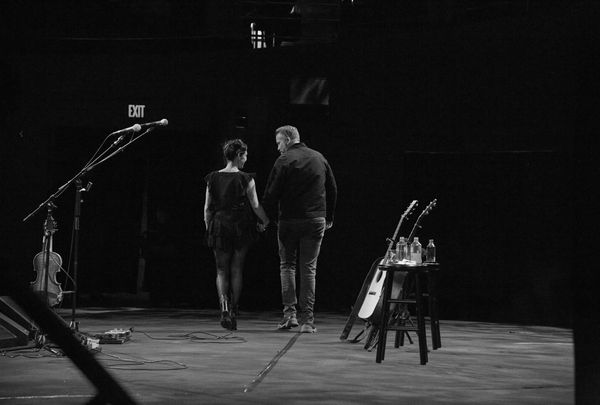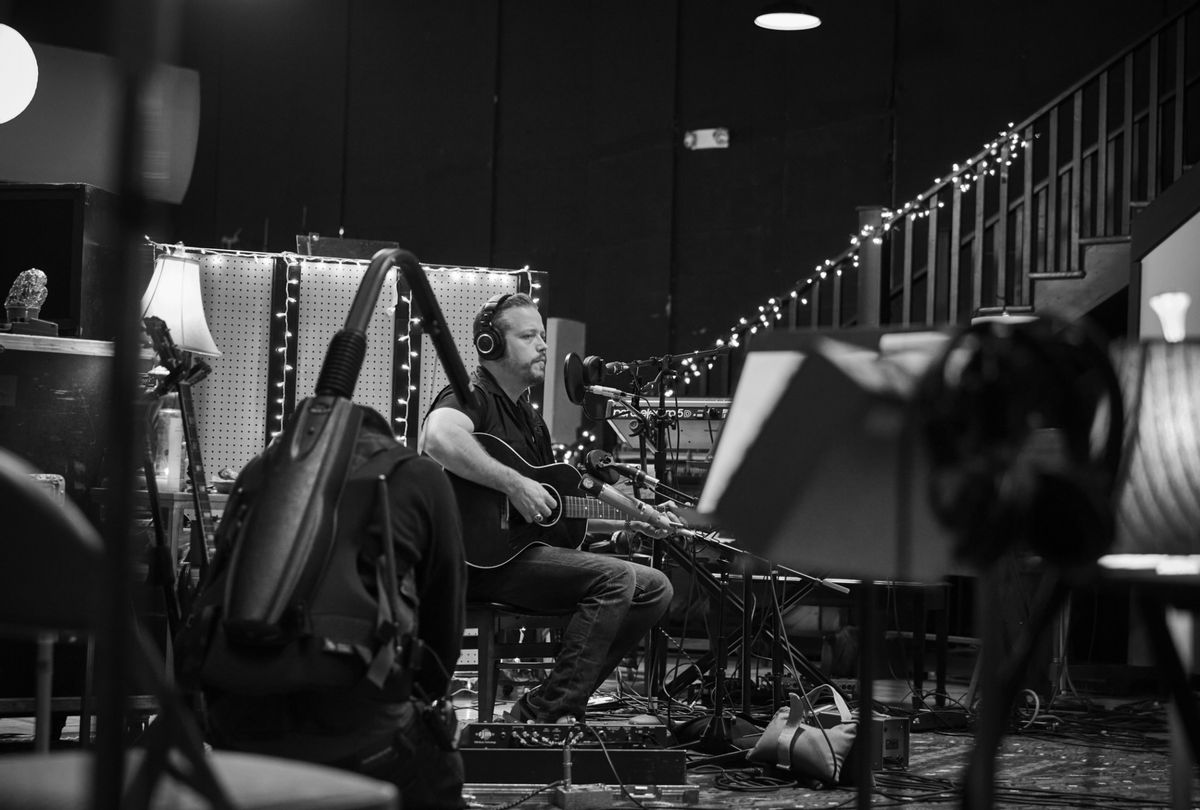"I'll be your Emmylou and I'll be your June / if you'll be my Gram and my Johnny too," the band First Aid Kit sing in their 2012 song "Emmylou." The Emmylou of the title is of course Emmylou Harris and the Johnny, the legendary Johnny Cash. The June is June Carter Cash, the singer-songwriter and wife of Johnny for decades. But the Gram of the song is perhaps not so readily apparent; it's Gram Parsons, who had a musical partnership with Harris, one which never fully developed into a romance, as many artistic pairings do.
"Do writers only like to get with other writers?" a high school poet asked me years ago in a creative writing workshop I was teaching. I must have brought in work by Sylvia Plath and mentioned her marriage to Ted Hughes. Or taught Mary Wollstonecraft Shelley and Percy Shelley. Or Sandra Doller and Ben Doller, contemporary poets and partners who changed and combined their former last names (Miller and Doyle). Or any number of writers who did, in fact, get with other writers.
The impact of telling a story out of chronological order is that the past doesn't stay buried, like trauma.
There's the convenience factor. If you're performing music, giving readings or mounting art shows, you're going to be surrounded by other people doing and interested in the same. But there's also the creative drive, which not everyone understands. "Running with Our Eyes Closed" the new Sam Jones-directed documentary now streaming on HBO, purports to be about musician Jason Isbell, who has eight studio albums with his band the 400 Unit — and it is: about his difficult Alabama childhood, "Almost Famous"-style big break, sobriety and the making of his 2020 album "Reunions."
But the documentary is also overwhelmingly about marriage, Isbell's long marriage with musician and band member Amanda Shires, exploring how the union has been fire-tested by addiction, the pandemic and the past. It does not delve into perhaps the darkest aspect of such an artistic union: how it might be tested by fame.
"Running with Our Eyes Closed" begins at home, the Nashville home that Isbell and Shires share with their young daughter — and a whole lot of chickens, birds, the occasional skunk. Right away we know this isn't a typical music documentary of beer-soaked bars and adrenaline-fueled late nights, although there's plenty of that. There are also plenty of home videos: the musicians struggling to record themselves, to practice and write, to grow vegetables, to read their daughter to sleep.
Maybe for an artistic partnership to work it needs the domestic too, the ordinary moments without the heightened drama of performance, of persona, of fame.
Told in a non-linear style, we first see the couple happy, then we see them struggling. "F**king unbelievable," producer Dave Cobb says after Isbell plays a new song for the band while Shires sits listening. She has notes on the lyrics. She starts her interview to the camera wearing large, dark sunglasses inside, as she does multiple times throughout the film (I think of Tori Amos, hiding behind long hair onstage; Kirstin Hersh taking her contact lenses out to perform — ways, perhaps, for a more introverted or private person to open up).
The impact of telling a story out of chronological order is that the past doesn't stay buried, like trauma in general. And Isbell's past is difficult: early addiction enabled by joining the Drive-By Truckers on tour when he was just 22. The band later fired him, as Isbell puts it in the documentary, for out-of-control behavior when he was drinking.
 Amanda Shires and Jason Isbell in "Running With Our Eyes Closed" (HBO)That behavior also tests the couple's marriage — Shires says she trusts him but not the addiction — as does "the way he gets" when making an album. That way appears to be tunnel-visioned, not seeing Shires, her contribution, or always considering the feelings of someone not simply a band member but a wife. At one point, the couple have a tense moment about her playing the fiddle too loudly. "I still don't really think of it as she's in the band. I need her to do different things and I think she needs to have a different role," Isbell says. What does Shires think?
Amanda Shires and Jason Isbell in "Running With Our Eyes Closed" (HBO)That behavior also tests the couple's marriage — Shires says she trusts him but not the addiction — as does "the way he gets" when making an album. That way appears to be tunnel-visioned, not seeing Shires, her contribution, or always considering the feelings of someone not simply a band member but a wife. At one point, the couple have a tense moment about her playing the fiddle too loudly. "I still don't really think of it as she's in the band. I need her to do different things and I think she needs to have a different role," Isbell says. What does Shires think?
Can an artistic couple control which one of them makes it first or biggest or at all?
It's a difficult balance, to work with someone all day, especially on an intense, personal creative project, and then come home to them too. But while the documentary starts with Isbell alluding to sleeping in a hotel and the couple not speaking (all the while recording an album), the pandemic has brought them closer together. Spending time together without the pressure of performing, just being a family in quarantine through the long months of the first part of COVID, was a boon to their marriage. Maybe for an artistic partnership to work it needs the domestic too, the ordinary moments without the heightened drama of performance, of persona, of fame.
We don't see much of Shires' past, not without Isbell; we don't see much of Shires at all. She "has her own career," one of the grandparents says but the film provides no details. Granted, this is a documentary about Isbell. His name is on the title — and, like the fictional Daisy Jones & The Six, on the band — and director Jones' oeuvre has been centered on men, from documentaries about Tony Hawk and Wilco to music videos for Foo Fighters and Mumford & Sons.
But to create a full portrait of a marriage, you need to have both people. And when one of those people is a star in her own right, it would be nice to hear her.
Shires started playing the fiddle as a child, joining the Texas Playboys when she was 15. As a solo artist, she has seven studio albums. The most recent, 2022's "Take it Like a Man" was created after Shires had said she was giving up music, frustrated by the industry, including its double standards. Some of the songs on "Take it Like a Man" also dwell deeply in issues and anxiety about her very public marriage with Isbell, as does Isbell's album "Reunions," the one recorded in the documentary. As NPR writes, "This willingness to be real and forthright is a quality that attracts listeners to both Shires and Isbell, though it's not without its complications . . . Shires knows that being a woman means that the bulk of any public criticism of her marriage could and likely would land squarely on her shoulders, deserved or not."
Want a daily wrap-up of all the news and commentary Salon has to offer? Subscribe to our morning newsletter, Crash Course.
In many ways, Isbell and Shires have had parallel career trajectories. But the world doesn't view the contributions of men and women the same. I've been to multiple shows of both Isbell and Shires performing solo (and will attend again, when both tour with the 400 Unit this summer, in support of Isbell's upcoming album "Weathervanes"). But the only time I cried was when Shires sang "Highwomen" from her country music supergroup of the same name: "I was gifted as a girl . . . I heard 'witchcraft' in the whispers and I knew my time had come."
Can an artistic couple control which one of them makes it first or biggest or at all? No. Can they control what is written, reviewed, made into documentaries about their work and lives and what is not? No. All they can do is keep creating while hopefully making space for each other, bringing the other along, perhaps, while also backing away when it's time for the other to shine and recognizing that the world may be treating them differently. "I'm not asking much of you," the First Aid Kit song goes. "Just sing, little darling. Sing with me."
"Running with Our Eyes Closed" is now streaming on HBO. Watch a trailer via YouTube below:
Read more
about music



Shares